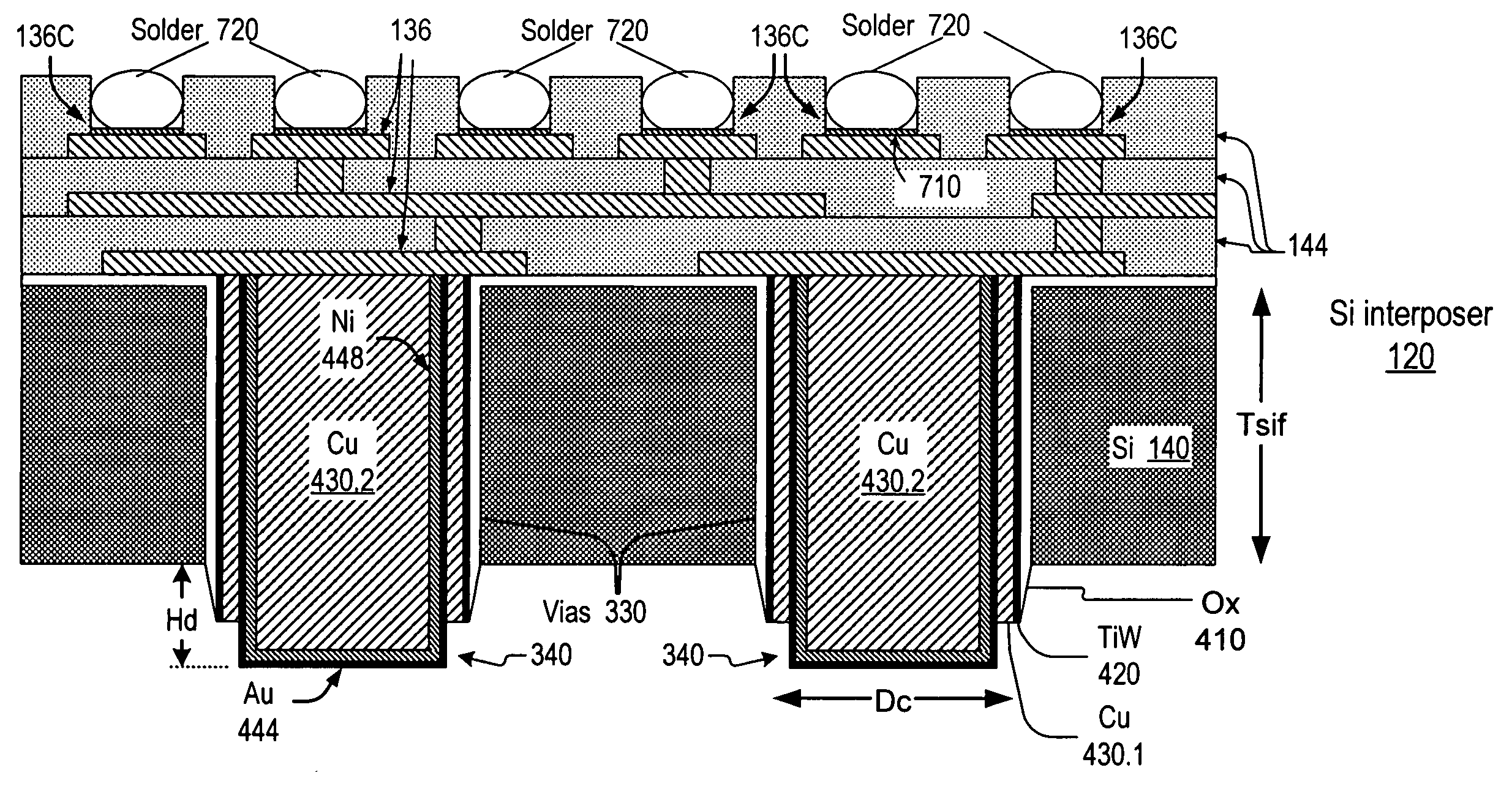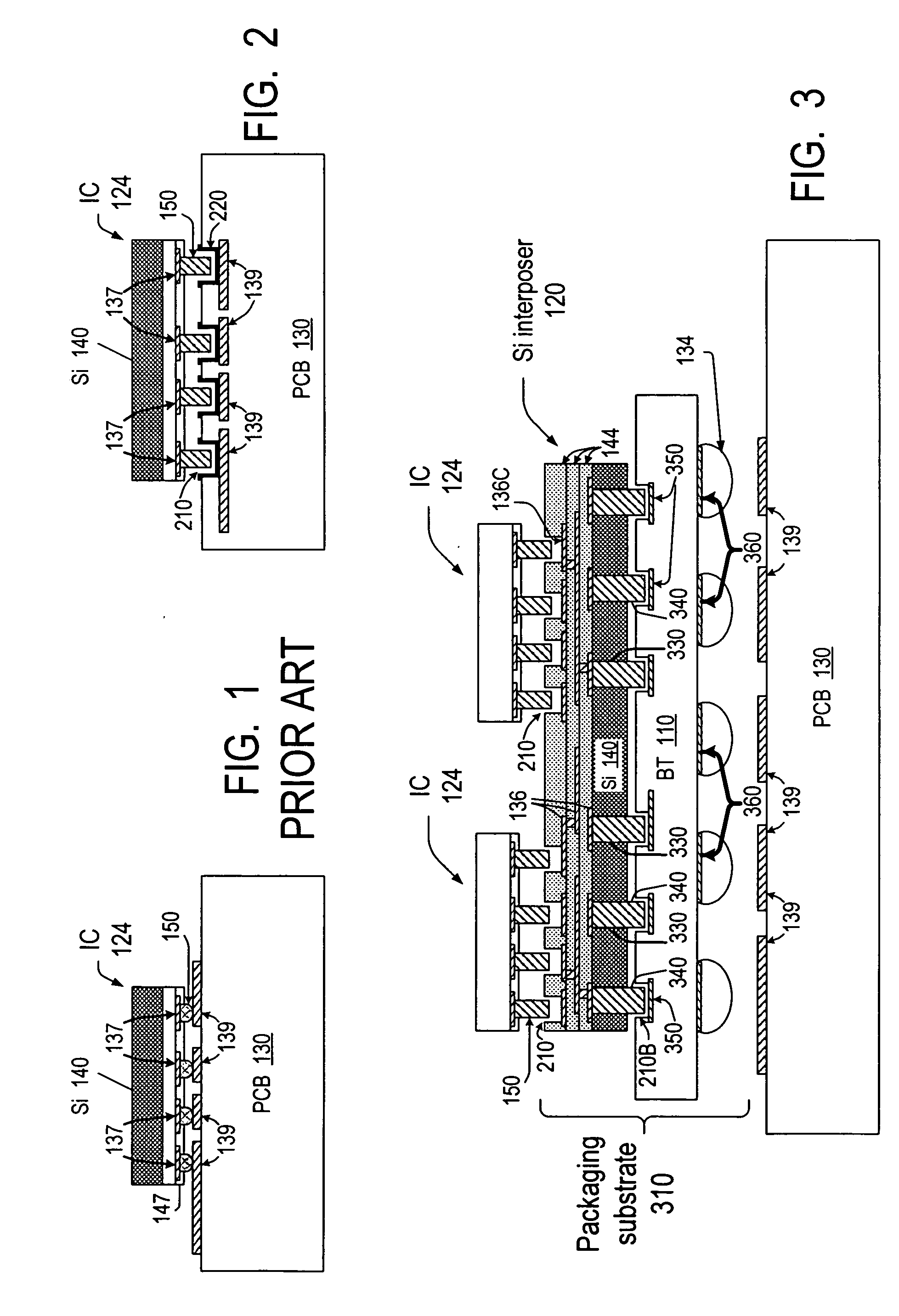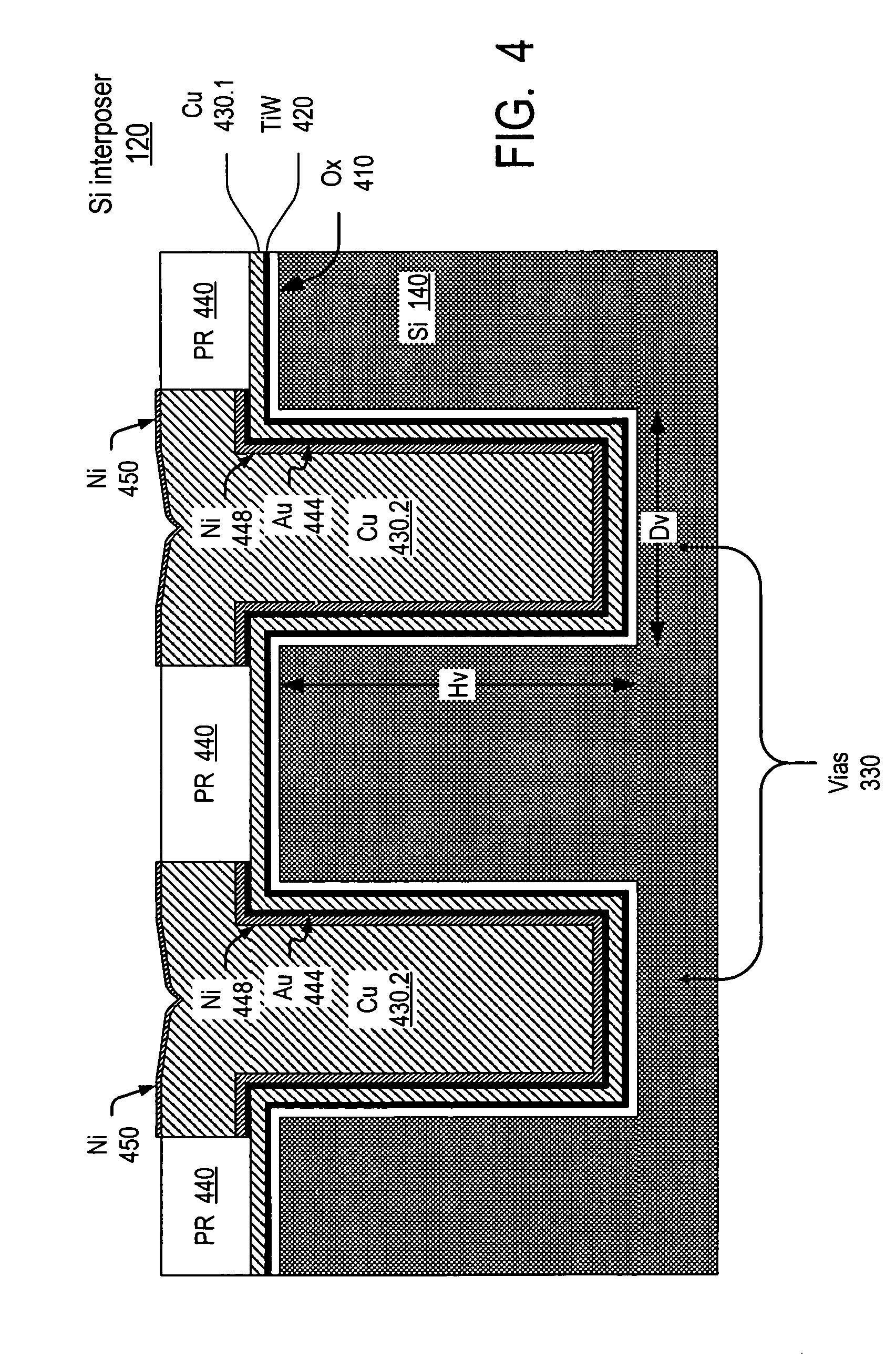Attachment of integrated circuit structures and other substrates to substrates with vias
a technology of integrated circuits and substrates, applied in the direction of semiconductor devices, semiconductor/solid-state device details, electrical apparatus, etc., can solve the problems of mechanical and thermal weakening of solder joints, increased fatigue stresses on solder joints, etc., to improve the strength and electrical conductivity of bonds
- Summary
- Abstract
- Description
- Claims
- Application Information
AI Technical Summary
Benefits of technology
Problems solved by technology
Method used
Image
Examples
Embodiment Construction
[0022] The embodiments described in this section illustrate but do not limit the invention. The invention is not limited to particular materials, process steps, or dimensions. The invention is defined by the appended claims.
[0023]FIG. 3 illustrates another integrated circuit packaging structure. Integrated circuit packaging substrate 310 is an intermediate substrate that provides an interconnection between dies 124 and PCB 130. Substrate 310 includes two intermediate integrated circuit packaging substrates 110, 120. Substrate 120 is a silicon interposer attached to BT substrate 110, and thus is itself a semiconductor integrated circuit. The attachment is made as described above in connection with FIG. 2. More particularly, cavities 210B (also called vias or openings herein) are formed in the top surface of BT substrate 110. Protruding contact pads 340 of interposer 120 are inserted into the cavities.
[0024] Dies 124 are attached to interposer 120 as in FIG. 2. More particularly, ca...
PUM
 Login to View More
Login to View More Abstract
Description
Claims
Application Information
 Login to View More
Login to View More - R&D
- Intellectual Property
- Life Sciences
- Materials
- Tech Scout
- Unparalleled Data Quality
- Higher Quality Content
- 60% Fewer Hallucinations
Browse by: Latest US Patents, China's latest patents, Technical Efficacy Thesaurus, Application Domain, Technology Topic, Popular Technical Reports.
© 2025 PatSnap. All rights reserved.Legal|Privacy policy|Modern Slavery Act Transparency Statement|Sitemap|About US| Contact US: help@patsnap.com



